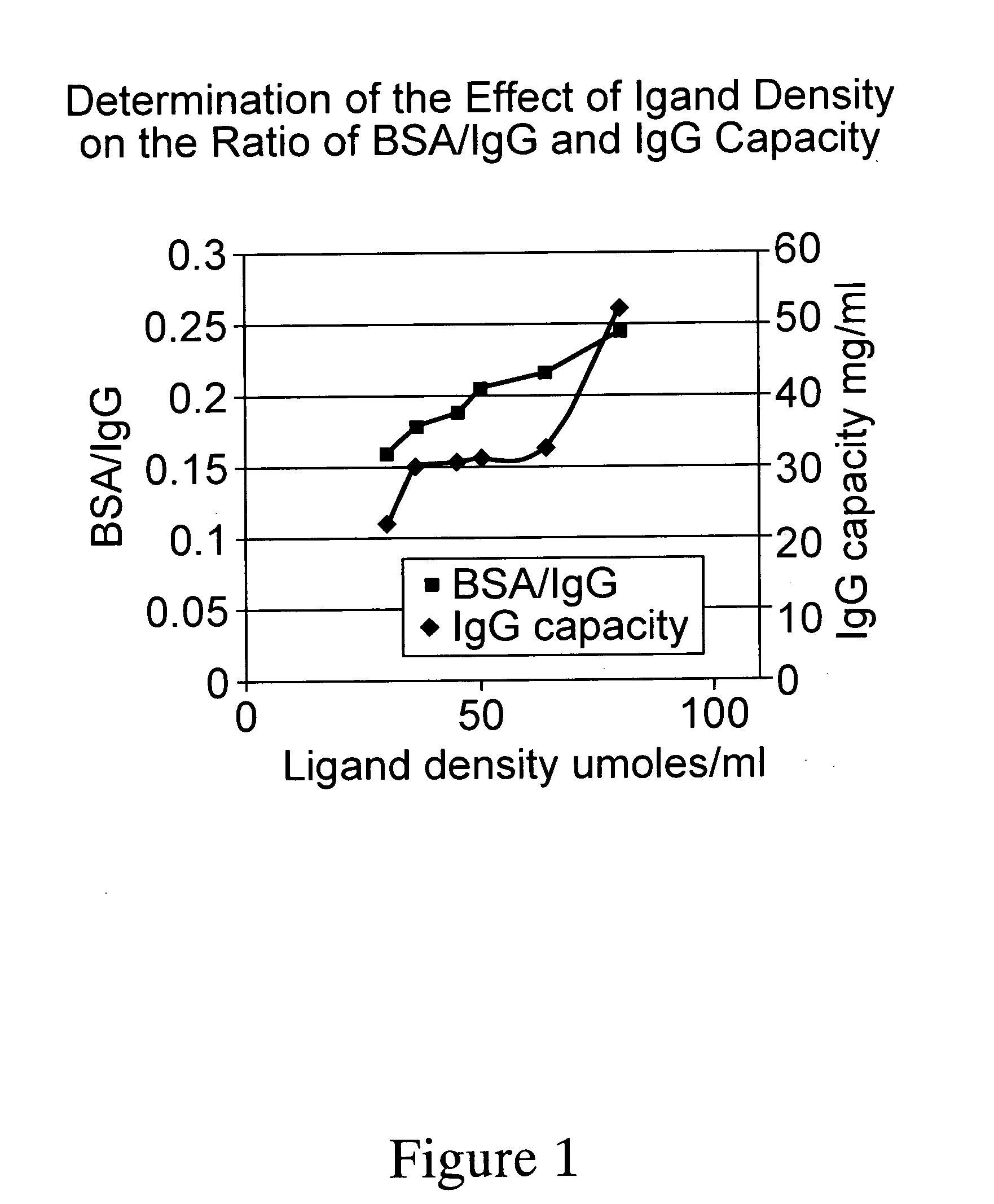Immobilised affinity medium and its use in separation
a technology of affinity medium and immobilised medium, which is applied in the field of medium and its use in separation, can solve the problems of high degree of non-specific binding in conventional non-affinity chromatographic processes, and achieve the effect of optimal ligand performan
- Summary
- Abstract
- Description
- Claims
- Application Information
AI Technical Summary
Benefits of technology
Problems solved by technology
Method used
Image
Examples
example
[0022] The effect of ligand density on the ratio of binding of BSA:IgG was determined for ABI.
[0023] A number of adsorbents were prepared with varying ligand densities. These were prepared via allyl activation (0.1 mllml), bromination (using bromine water) and applying controlled levels of ligand (assuming that a 50% coupling efficiency would be achieved) at room temperature. The ligand densities were determined by titration. The media were then decanted and an aliquot taken to determine the ligand densities using tests described in U.S. Pat. No. 5,652,348 and U.S. Pat. No. 5,945,520.
[0024] Capacity measurements were carried out using 1 ml of adsorbent. The adsorbent was equilibrated using 5 column volumes (CV) of PBS buffer. Human polyclonal IgG or bovine serum albumin (BSA) at 40 mg / ml (2.5 ml) was applied to the column, then washed with 5 CV PBS buffer. Elution was carried out using 5 CV of 0.1 M Glycine / HCl (pH2). The capacity was determined by recording the absorption of the ...
PUM
| Property | Measurement | Unit |
|---|---|---|
| density | aaaaa | aaaaa |
| structures | aaaaa | aaaaa |
| affinity | aaaaa | aaaaa |
Abstract
Description
Claims
Application Information
 Login to View More
Login to View More - R&D
- Intellectual Property
- Life Sciences
- Materials
- Tech Scout
- Unparalleled Data Quality
- Higher Quality Content
- 60% Fewer Hallucinations
Browse by: Latest US Patents, China's latest patents, Technical Efficacy Thesaurus, Application Domain, Technology Topic, Popular Technical Reports.
© 2025 PatSnap. All rights reserved.Legal|Privacy policy|Modern Slavery Act Transparency Statement|Sitemap|About US| Contact US: help@patsnap.com

